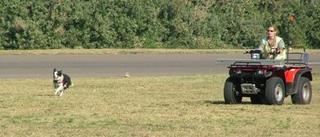Tuesday, July 19, 2005
"HIJACKING MADE EASY - Repentant Car Hijacker Explains How it is Done"
A repentant car hijacker (28) stole and hijacked cars for more than 14 years before deciding to go straight. Now he is a struggling fashion designer who presents motivational talks at schools in Orange Farm, south of Joburg, discouraging youngsters from doing crime. He spoke to Denis Droppa about the murky world of vehicle crime.
Q. 1: Are most cars hijacked on order by syndicates?
Answer: Yes, I would get a phone call to deliver a certain type of car by a certain deadline, and then we'd go out and search for one. If they needed it quickly, I would hijack. If I had a bit more time I'd steal a parked car, as it was safer.
Q. 2: Which types of vehicles are the most popular amongst hijackers?
Answer: We would get orders to steal just about anything. Double-cab bakkies, any make, were in very high demand. Also, "G-strings" (BMW 3-series), Polo's, Mercedes and Toyotas. I'd get paid a lot more for a double-cab, around R16 000, but only about R500 to R6 000 for a car. If it was an expensive car like the "Anaconda" (BMW 7-series) I could get about 15 grand, though.
Q. 3: Which cars have the lowest hijack risk?
Answer: There's no such thing. There's a demand for all sorts of cars, old and new. If the vehicle isn't sold then it's stripped for spares. The only thing there isn't really an interest in is expensive exotics. I once stole a Ferrari from a garage just for fun, drove it around for a while and then left it back at the garage.
Q. 4: Do most of the cars that aren't stripped end up beyond our borders?
Answer: No, a lot stay in the country. They are given new identities, re-registered and sold here .
Q. 5: How effective are modern anti-theft and tracking systems?
Answer: When I was stealing cars three years ago, most of them were a joke. I could break into almost any car and drive it away within minutes. Some cars were very advanced and a lot of works to steal though, like Volvos. With tracking systems, it was usually very easy to find where the device was hidden. While one guy drove the car, his accomplices would strip the
interior looking for the tracker's hiding place. Then sometimes we'd place the tracking unit into a taxi and trick the police and the helicopters into following the taxi. Nowadays the tracking systems are getting a lot better though, with quicker response times, and towards the end I nearly got caught a couple of times.
Q. 6: How did you learn how to override these high-tech systems?
Answer: Experience, and learning from other car thieves. We all shared information. I! f I was having difficulty with a particular car, sometimes I'd dress up nicely and go to a dealer posing as a customer. I'd ask the salesman how good the anti-theft system was on that car and he would give me all the details.
Q. 7: What was your hijacking modus operandi?
Answer: We would get people in their driveways, on the way to work or on their way home. Rainy weather is the best time to steal cars. When it's raining it makes it more difficult for the tracking helicopters to find you.
Q. 8: In a hijacking did you normally go for soft targets like women?
Answer: No, I could take on anyone. I was a professional. Some people wore guns but never got a chance to use them as I was too fast. I'd stick my gun right in their faces and they wouldn't give me any trouble. That's why I never shot or hurt anyone; I was against that. A friend of mine sometimes shot people he hijacked and he used to wake up with nightmares.
Q. 9: Which area s did you target?
Answer: Any white suburb, it didn't matter. I never stole in the townships because people were poor there. I also didn't rob black people.
Q 10: Is that because you don't like whites?
Answer: No, it's because darkies are dangerous. If you rob them, they go to a sangoma who would "take care" of you.
Q. 11: How much money did you make?
Answer: A lot, but I wasted it all. It was easy come, easy go. Some money would go to police and judges and prison officials in bribes. I got caught a few times but was never convicted. Bribing a police officer to lose a docket cost about R2 000 to R5 000. The only time I spent in jail was awaiting trial. Then I'd bribe the prison guard to help me escape.
Q. 12: Is this the norm, or were you lucky?
Answer: I knew how to find the loopholes and beat the system. Some of my friends were caught and convicted to 8 or 12 years or more.
Q. 13: What made you stop crime?
Answer: I saw I had nothing to show for all those years. I felt guilty for what I'd done and wanted to achieve something in my life. That's why I do community work persuading other people not to do crime, and I'm also a fashion designer. I'm struggling with money now. My sewing machine broke and I can't afford to fix it, but I won't go back to crime. That life is a stupid life.
Q. 14: What is your advice to motorists to avoid hijacking?
Answer: Look out for people following you. Some hijackers spot a car they want and follow the person home. Be aware. If you're suspicious, make a few false turns and see if that car is still behind you. If it is, drive to a police station.
PASS ON, TO AWAKEN SOMEONE!!!
Sunday, July 10, 2005

A nice little Czech jet trainer. There now seem to be a number of jets like this in private ownership in South Africa.
 A SAAF chopper swings into action. The backbone of 'search and resue' operations the Oryx was developed from the French Puma.
A SAAF chopper swings into action. The backbone of 'search and resue' operations the Oryx was developed from the French Puma. Anti Hadeda patrol in action. No pilot would like to hit one of these large birds - say when doing a 'touch-and-go' at 190 knots in a Mirage 3.
Anti Hadeda patrol in action. No pilot would like to hit one of these large birds - say when doing a 'touch-and-go' at 190 knots in a Mirage 3.Sixty three years old and still going strong; a ex SAAF Harvard touches down after its display. The aircraft the Air Force was built on for nearly six decades. Awful colour scheme!

 A Boeing 737-500 of Nationwide does a swing past the show......
A Boeing 737-500 of Nationwide does a swing past the show...... 
.......as does Kulula.Com
A Right Royal Time
A general rummaging through some boxes turned up some
The Programme for the Coronation Celebrations sets out the start of proceedings.
“Tuesday, 11th May, 1937
4.45 pm – A Special Meeting of the City Council will be held in the Council Chamber, Municipal Buildings, to pass Loyal Resolutions.
5.00 pm – From 5 pm the
A Guard of Honour of the Royal Durban Light Infantry under the command of Captain H.H. Grant, with King’s Colour of the First Battalion, Regimental Band, and the Drums of the 1st and 2nd Battalions, will be mounted in Church Street, in front of the City Hall, at 5.25 pm.
His Worship the Mayor (Councillor Fleming Johnston) will be present and be accompanied by members of the City Council……..and other prominent citizens.
The Mayor will then inspect the Guard.
On returning to the dais, the Mayor will direct the Town Clerk to read the Proclamation. On conclusion of the Proclamation, the Guard will present arms and the Mayor will cry ‘God Save the King.’ The Band will then play ‘God save the King’ on conclusion of which the Guard will order arms and remove headdress, whereupon the Mayor will call for three cheers for His Majesty the King.
The Drums will then beat Retreat after which the Evening Hymn, ‘Abide with Me,’ will be played and the Drums will then sound the Call ‘Retreat’ and the Flags lowered.
The Guard will then march past, His Worship the Mayor taking the salute.”
The festivities lasted until Saturday 15th May and included more parades, ‘Flannel’** dances in the City Hall, Grand Concerts, a Coronation Ball, Sports Meetings, Schools Days, Ex-Servicemen’s Parades, a Historical Tableau and special attractions at the ‘Ocean Beach’.
Included in the programme are some notes of pride on
That reads in stark contrast to the reality of today after having endured 4 breaks in the water supply, and five breaks in electricity (two today) during the past two weeks.
(**’Flannel’ refers to the term of the day for men’s light trousers - not being part of a suit. Thus a ‘Flannel’ dance is a less formal affair and does not have the status of a ‘Ball’ where a Dinner Jacket would be worn by men.)



